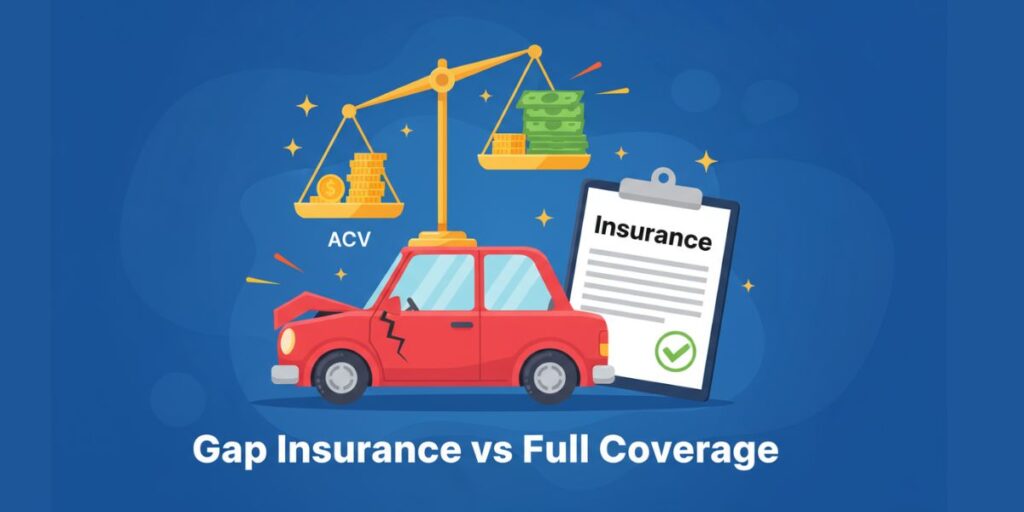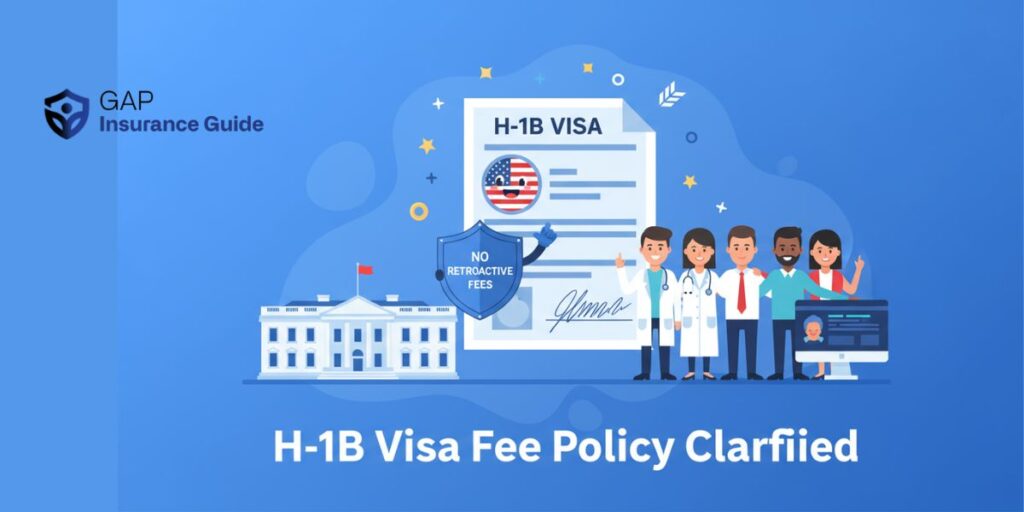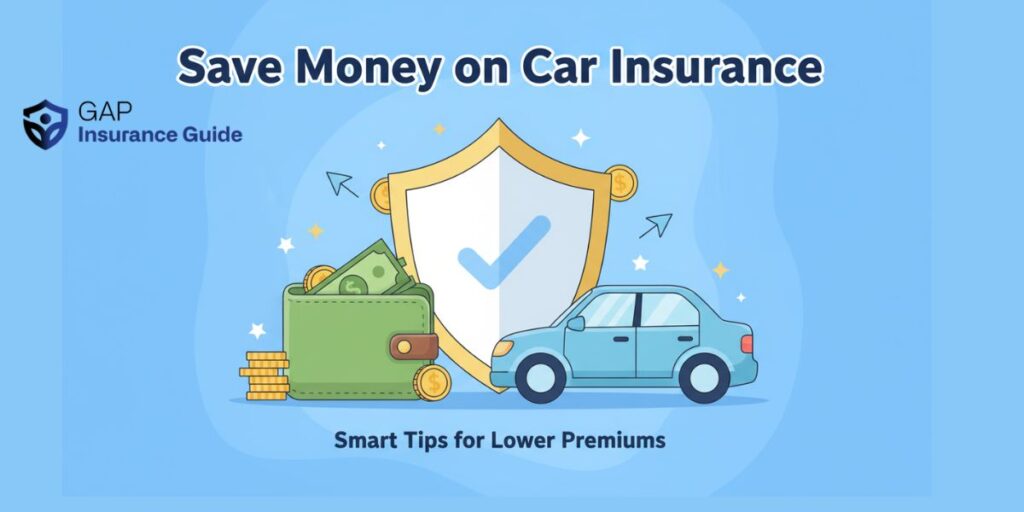Full coverage car insurance protects your vehicle through comprehensive and collision coverage, paying for repairs or replacement if it’s damaged in an accident, theft, or disaster. However, it only pays up to the car’s actual cash value (ACV) at the time of the loss — which is often less than what you still owe on your loan or lease.
That’s where gap insurance (guaranteed asset protection) steps in. It covers the difference between the insurance payout and your remaining loan balance.
Example:
- You owe $30,000 on your car loan.
- After a crash, your insurer values the car at $27,000 and pays you $26,500 after the deductible.
- You still owe $3,500.
- Gap insurance pays that $3,500 so you’re not stuck covering it yourself.
When Gap Insurance Applies
Both coverages may come into play after a total loss, but they cover different parts of the bill:
- Full coverage pays your car’s ACV.
- Gap insurance covers the shortfall if the ACV payout isn’t enough to pay off your loan or lease.
If your full coverage payout equals or exceeds your loan balance, gap insurance isn’t needed. But if your car depreciates faster than you pay down your loan, gap insurance can save you thousands.
When Gap Insurance Makes Sense
Gap insurance is optional unless your lender or leasing company requires it. You should consider it if:
- You made a down payment under 20%.
- Your loan or lease term is longer than 60 months.
- You rolled negative equity from a previous loan into a new one.
- You bought a car model known for rapid depreciation.
- You couldn’t afford to pay the difference out of pocket if your car is totaled.
Cost of Gap Insurance
Gap insurance is relatively affordable when purchased through an insurer — about $2 to $20 per month, averaging $7 per month or $84 annually.
Dealers and lenders may offer gap waivers instead. These waive your obligation to pay the remaining balance if your car is totaled. However, they often cost $1,500 or more and are rolled into your loan, making them much more expensive than buying gap insurance from an insurance company.
How to Buy Gap Insurance
Here’s how to add gap insurance to your coverage:
- Check if you already have it. Some leases automatically include gap coverage.
- Ask your current insurer. Most companies require you to carry full coverage before adding gap insurance.
- Shop around. Not all insurers offer gap coverage, and rates vary. Compare quotes online or through marketplaces.
- Review lease or loan agreements. If gap coverage or waivers are already included, you don’t need to buy it separately.
Mind the Gap
If your car is totaled and your loan balance exceeds its value, you could be left owing thousands of dollars. For a relatively low annual cost, gap insurance ensures you won’t have to dip into savings to pay off a car you no longer own.
It may not be necessary forever, but for new cars with small down payments or long loan terms, it’s a smart safeguard.
Disclaimer: The content published on Gap Insurance Guide is intended for general information and educational purposes only. We cover topics related to insurance, banking, finance, and trading, but none of the material should be considered financial, legal, or investment advice. While we aim to provide accurate and up-to-date information, we make no guarantees about completeness, reliability, or accuracy. Any actions you take based on our content are strictly at your own risk, and Gap Insurance Guide will not be liable for any losses or damages. We strongly recommend consulting a licensed financial advisor, insurance expert, or other qualified professional before making decisions. Articles may include links to third-party websites, and we are not responsible for their content or practices
I’m Abhilash, a finance and business content writer passionate about simplifying money matters. I share practical insights on finance, business growth, and insurance to help readers make informed decisions. Through my blogs and articles, I aim to provide clear, reliable, and actionable advice for smarter financial planning and success.


